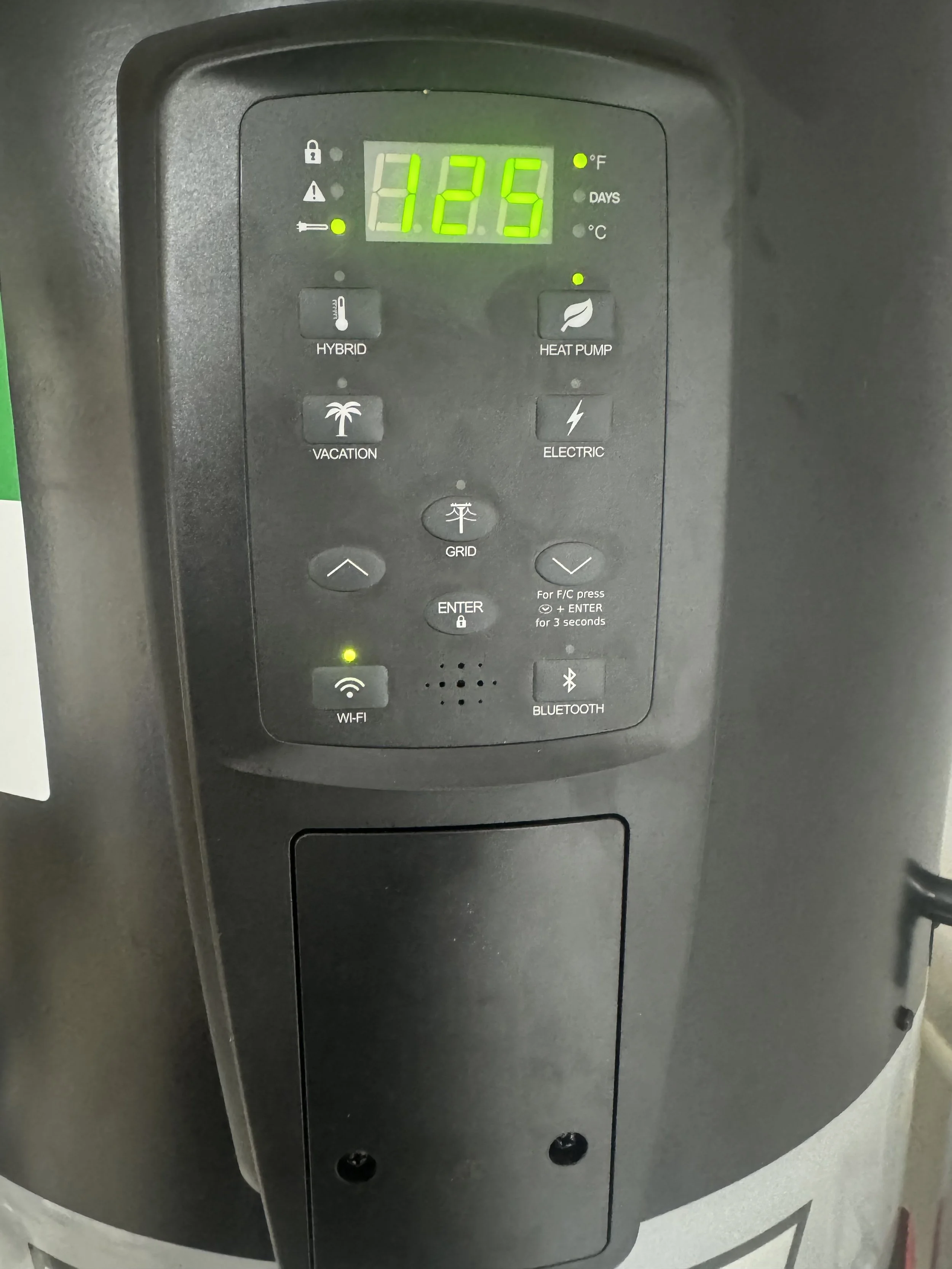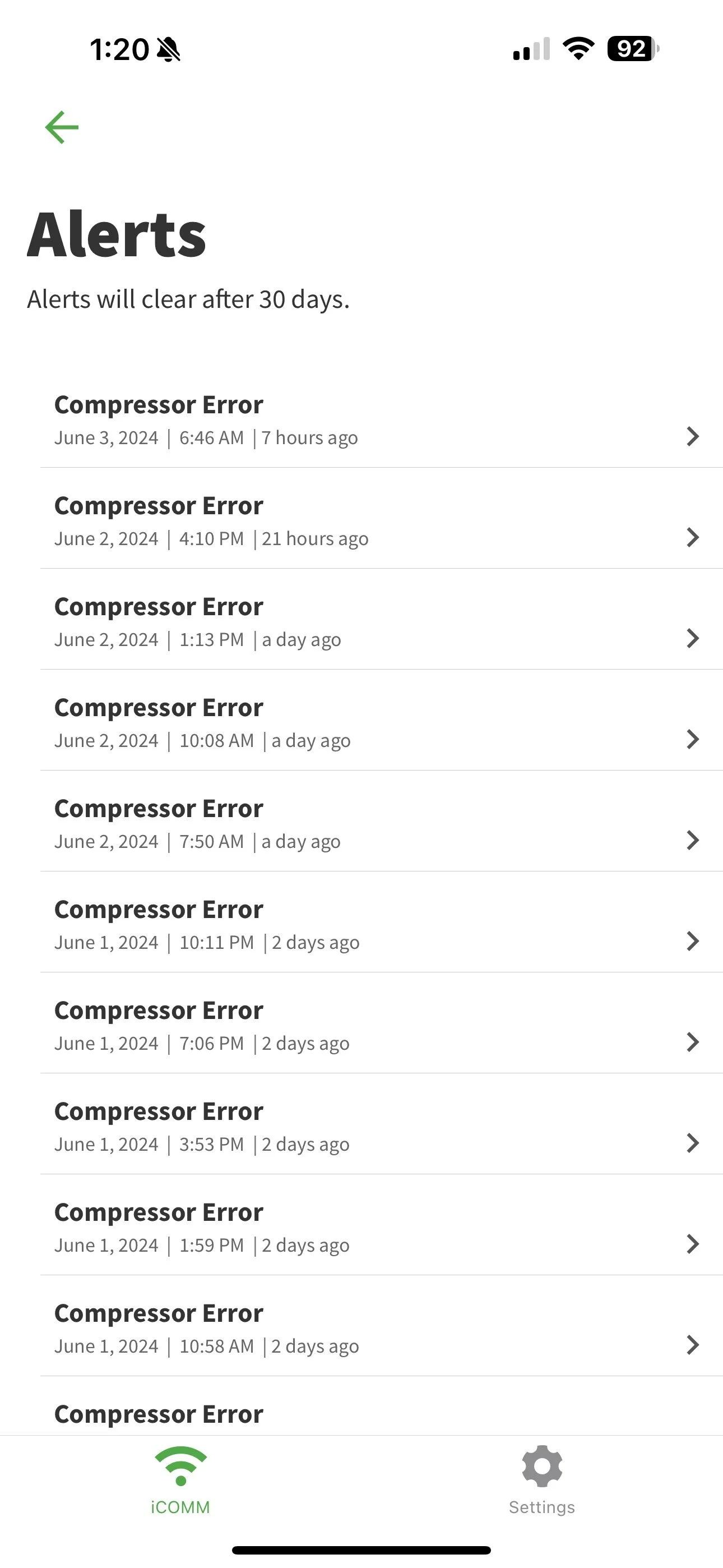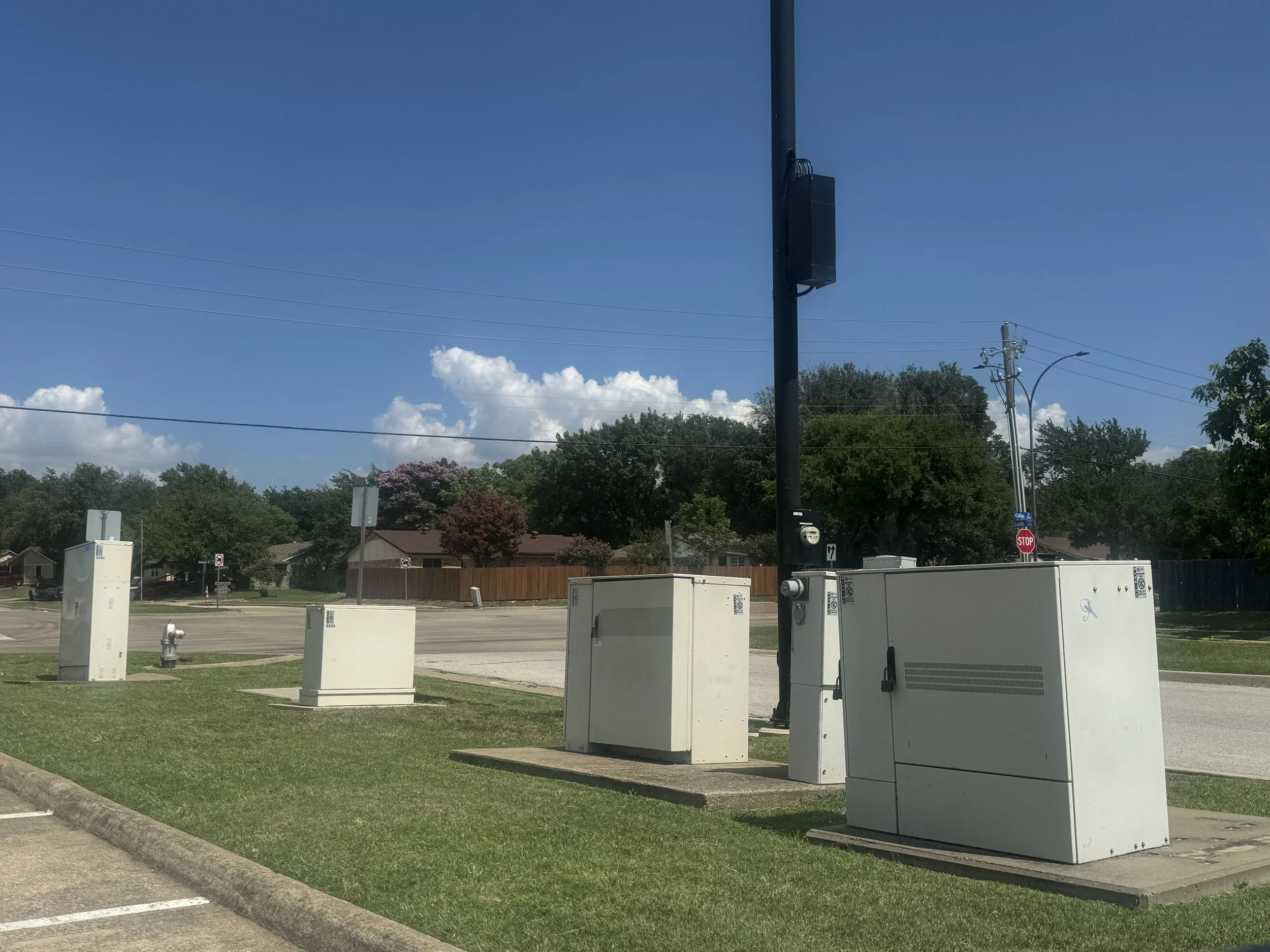The Hot Water Heater
I originally thought discussing the new hot water heater would be a paragraph in a rather calm and possibly boring update regarding changes on the whole solar/battery/green front in some future blog post. I was wrong.
You see, I needed a new hot water heater. The old one was supposed to last 10-12 years, and it was installed in 2002, so it was at least a decade past its prime. In fact, the plumber refused to perform maintenance on it, because he said if he drained it for cleaning, it could essentially die, and he was surprised it was still working.
So the old water heater which ran on gas needed to go, and I decided to take advantage of the situation and really shop around for something more in line with my overall green energy goals. I was already leaning towards an electric water heater simply because of the solar panels - I felt I could have water that was heated for free and it would be glorious. And the heat pump versions of this looked extremely energy efficient.
The New Unit
After quite a bit of research on the technology as well as numerous models, I decided on a hybrid heat pump hot water heater from AO Smith - the HPTS-50. Note that the “S” in the model number stands for “Smart”. Yes, I specifically wanted a smart hot water heater, mainly for monitoring and controlling via Home Assistant, and yes this particular model fits that bill (more on the smart details below). The 50 means 50 gallon capacity, and while you might think that’s a bit small, this replaced a 45 gallon gas water heater. They do make larger capacity units, but I simply didn’t need it.
The heat pump part is the main thing - extremely energy efficient. The hybrid part means that if there is extra demand for hot water, it will automatically switch over to regular “electric mode” and get hot water quicker, but otherwise it will stay in heat pump mode. And you can set it via the app (or Home Assistant) to be in electric mode, hybrid mode, or regular heat pump mode. There is even a vacation mode as well, so there are all kinds of possibilities surrounding automations in Home Assistant to really take advantage of the smarts and save energy and money.
After picking out the make and model, I had to work out acquisition and installation. It took a while to get the electrician out to get the circuit installed, and I had ordered the tank itself from a wholesaler I found in Florida willing to ship it to me, so for a while a large box took up space in the garage before the electrician got the circuit installed. After that, I had the plumbers out, disconnecting the old gas heater and installing the new electric one. In doing their due diligence the plumbers scheduled the city inspector to check out the new water heater. Of course it failed inspection as the condensate line simply went into a bucket and not be drained to a sewer drain or to the outside, and while I was at first concerned I was under no obligation to actually get the thing corrected as I simply have to on rare occasions empty a bucket. So far, not a drop of liquid has accumulated in the bucket anyway.
Going this route has saved me several thousand bucks. You see, if I had ordered this particular unit through the plumbing/HVAC company I use regularly, the bill would have been close to $9000.00 USD. Ordering it myself and simply having my regular plumbing/HVAC folks install it the total was way less than half that, and I had opted for that route.
Problems Arise
The unit was installed and seemed to function just fine for a few days, but it began experiencing intermittent failures of the heat pump compressor, and quite frankly AO Smith’s telephone support left a lot to be desired. For example, on one call with the plumber they said the error code on the display unit was not a real error code and that they would require photographic proof before continuing (in later phone calls AO Smith admitted they were apparently looking at the wrong manual!), and finally they seemed to simply abandon further diagnostics and decided to simply replace the entire unit, leaving extremely vague instructions and assuming that all parties including a local plumbing supplier and the plumber would know exactly what to do.
The plumber said sometimes a company ships a lemon unit, and so while not very common, he seemed to be roughly familiar with the type of issue, peeled off some sticker that AO Smith said the supplier would need, and headed out.
When the plumber arrived at the supplier that AO Smith had directed us to use, it was determined that this supplier not only did not do warranty swaps, they didn’t carry AO Smith products regularly. They would sometimes get them if a local plumber was having an AO Smith unit shipped to the area, but that was it. After I called AO Smith back, they said they would take care of the problem, which involved simply issuing me a refund that I could use to purchase a replacement unit myself. The process was that I had to purchase the replacement unit and get it delivered here as I was going to need the serial number off of it, send in the new serial number with the physical serial number sticker off the old unit and a copy of the receipt via snail mail, and then they’d send me a check. This seemed like an insane process, but I opted to go ahead as I seemed to have no other choice. I mean it makes sense as it is usually plumbing companies doing this not homeowners themselves, plus they are trying to prevent fraud, but wow. And yes, I did not order the new unit until I had the entire process detailed in writing.
New Replacement
I ordered the replacement on June 5th from the same wholesaler as before, with a scheduled delivery date of June 11th. It arrived a day early on the morning of the 10th, I called up the dispatch office for the plumber to let them know, and they put me on the standby schedule for later that day. And not three hours later, they arrived and started the replacement process.
The new unit was up and op within literally minutes, with the largest amount of time involving draining the old unit and filling the new one. And so far it is working without errors. I’ve already noticed that I am not getting the electrical usage spikes I was getting with the old unit, so I am hoping this will go smooth and I can really start integrating it into Home Assistant, better collect data, and get a better handle on controlling electrical usage.
Dealing With Smart
There will be those that are curious about the whole “smart” thing, so let me give some context, and how that factored into all of this.
The HPTS-50 supports both Bluetooth and Wi-Fi. To enable either, one must be physically at the hot water heater. Only one can be implemented at a time, although the feature set is limited via Bluetooth. This feature set is available via the mobile app. The preferred method is of course Wi-Fi, and you are able to get a decent amount of customization, including setting your system up to take advantage of electrical rates based upon time of day or day of week, set custom schedules so that high-demand periods (such as during the morning) can be more easily met, tracking of energy usage, remote notification of errors, and so on. All of this data is transmitted via the Wi-Fi channel you’ve specified to get the info into the cloud and accessible via the app. As a result, you can also download this data into Home Assistant, and even perform the same actions from the app via Home Assistant automations, working things into the household schedule.
Do I trust any of this setup to be secure? Of course not. As the technology is new, it is currently running on the “shitty” VLAN reserved for new smart tech that hasn’t been fully vetted. Once this is more thoroughly checked out and I feel slightly better about it, or I’m at least familiar with the weaknesses, it will get moved to the slightly-less-shitty household/HVAC VLAN. At least for now I can say it is using TLS, allows for complex passwords, and due to limitations in the implementation such as a weak-range antenna and only allowing for one active user at a time, well, it isn’t as bad as some IoT I’ve seen.
I did have to stop the plumbers from disconnecting the old unit so I could reset it to factory default, erasing my shitty VLAN network Wi-Fi password from it, and I did all of that setup stuff on the new unit myself.
Summary
Bear in mind that taking portions of the acquisition process - ordering a unit from a reseller, dealing directly with the manufacturers, being the middleman between all parties including a plumbing company - can be worth it from a financial perspective, but if there is a problem then it is a massive headache.
Shouts out to Ben Franklin Plumbing especially poor Randy who has been out to my house so many times I think he’s friends with a few of the neighbors, AC Wholesalers for having an absolute painless process for adding large items to a cart and getting product out the door, and R + L Carriers for having an extremely efficient method of moving large items from point A to point B. All of them were friendly and painless to deal with. I do love AO Smith products - when they work. Their support could use a major overhaul.
I am quite happy with the unit itself. Initial estimates have me reducing the gas bill quite a lot, and considering solar and household batteries I am paying way less for hot water right now. Initial data suggests I am using less than 2kWh of energy a day, in fact I strongly suspect it is less than 1kWh. Considering the solar and during most months I have a surplus due to uploading excess to the grid, it is in fact free heating of my water. Yes, this will take a while before it pays for itself so to speak, but I did need a new hot water heater, so why not upgrade to something greener. It basically means that based upon the savings from gas bills this should end up saving me a lot of money. I’ll know more after a year of data gathering and number crunching, but that is how it is adding up so far.





